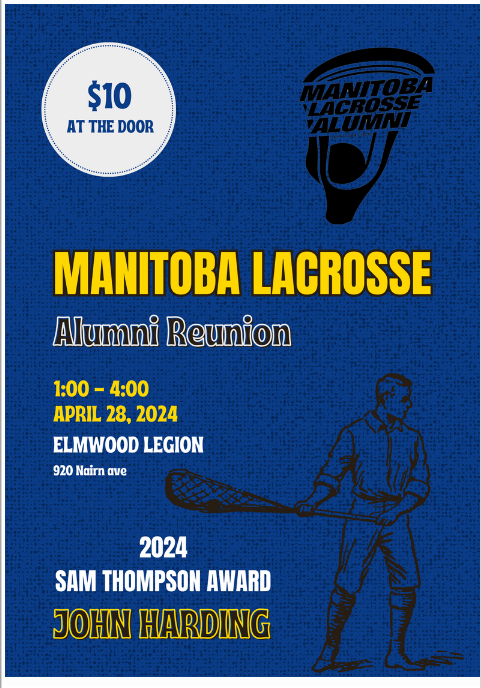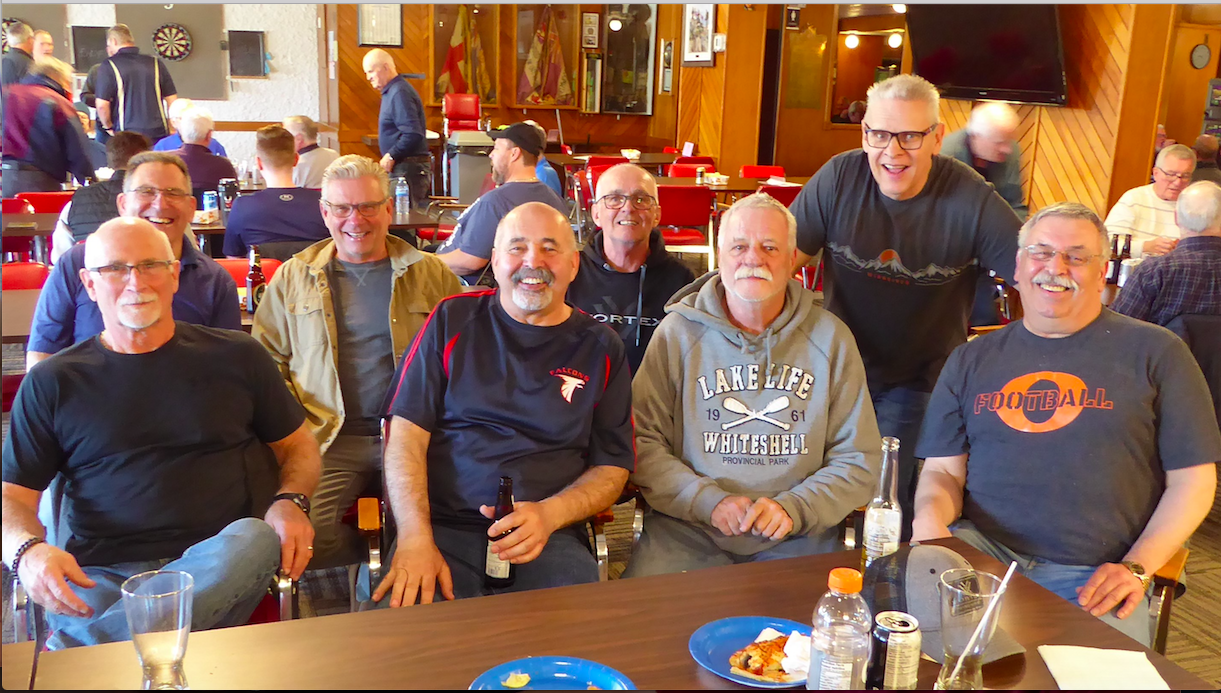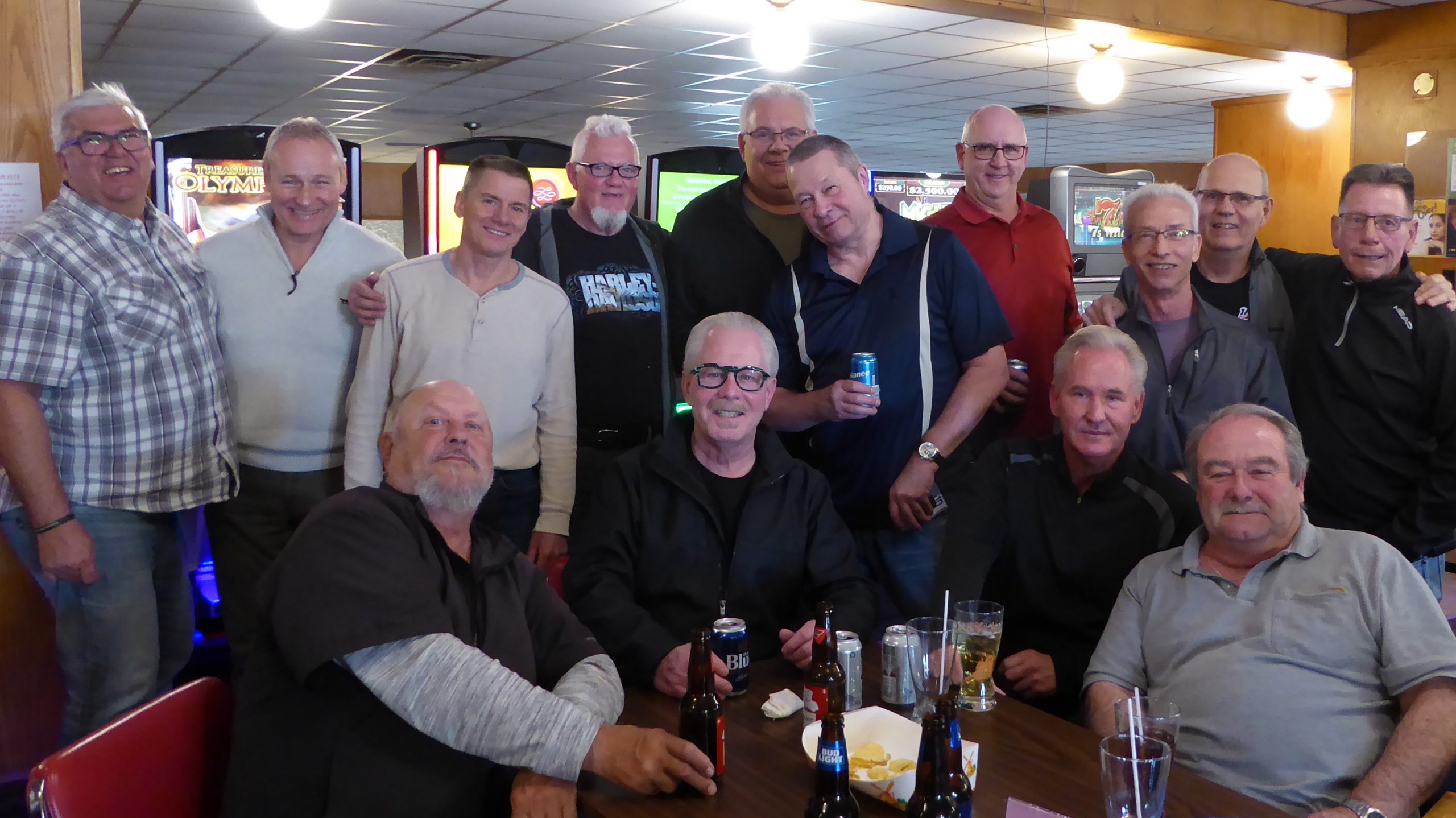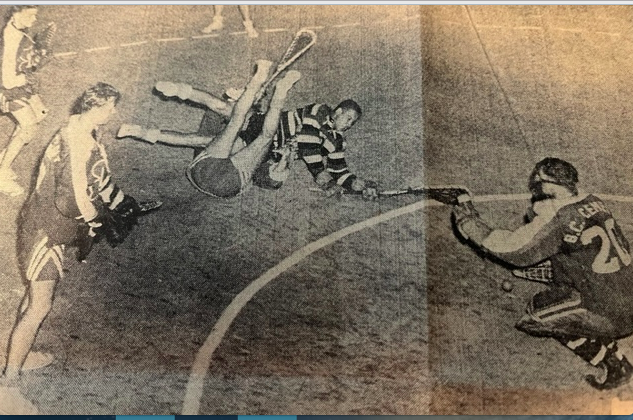THE SECOND GREAT ERA OF LACROSSE IN WINNIPEG
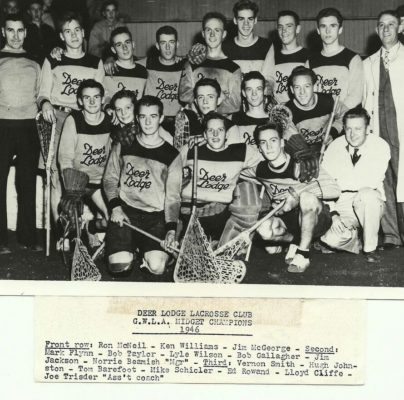
In the late '30's and '40's minor lacrosse lay dormant in Winnipeg and Manitoba for more than eight years until the arrival of Tom O'Brien from Brampton, Ontario. Tom. A long time lacrosse organizer in Ontario, believed that the nation sport of lacrosse could be returned to it position of prominence (in 1890's to 1920's Vince Leah described lacrosse as the king of sports in Winnipeg). During the period Sunday evening was reserved for lacrosse with crowds greater than 5000 cheered on their local team. These competitions often started with parades of the teams and their supporters marching down the street to the competition site- singing songs in support of the team and its star players.
This was not the situation witnessed by Tom O'Brien on his move to Winnipeg. He found a two team junior league and a floundering senior league, largely composed of the juvenile or junior aged players. O'Brien called a meeting of lacrosse enthusiast to revive the game in Winnipeg. Enthusiasm ran high at the meeting, with 10 community centers committing to operating 19 teams in the bantam, midget, juvenile, and junior categories.
A committee composed of Clark Simpson, Russell Ball, Dave Smith, Richard Gavita and Morris Mulvey was formed to search out various community clubs interested in adding lacrosse to their sports offerings. Members of this committee with a large number of volunteers traveled throughout Winnipeg delivering coach, player, and officials clinic.
With enthusiasm so high it was decided to meet again in 2 weeks time.
At the meeting O'Brien was elected president and Eric Abbott was chosen as secretary for the newly formed Greater Winnipeg Minor Lacrosse Association. The first task for O'Brien and Abbott was to gain support from the Canadian Lacrosse Association. After some intense negotiation the GWMLA received 20 dozen sticks and 4 sets of lacrosse goals. This overcame the biggest obstacle faced by the new organization- a lack of equipment. The GWLA also purchased another 9 dozen sticks and balls to be distributed to the community centers.
In 1944 the new association started play with 25 teams in three divisions. The bantam division was composed of Spartans and Excelsiors (North End), Lord Roberts, Elmwood Pats. Isaac Bock, Sir John Franklin, Border AC, Norwood, and Deer Lodge. The midget division had teams from Lord Roberts, West End Orioles, Isaac Brock, Norwood, Border AC, Deer Lodge, Sir John Franklin, and Elmwood Pats. The oldest age group, juvenile, was comprised Elmwood Terriers, Norwood, Isaac Brock, and West End Orioles. The Association grew to 20 clubs including CPAC, CUAC, Selkirk, St. Vital, and Fort Garry in the next three years. Most of the clubs that jumped on the lacrosse bandwagon had never offered the sport of lacrosse. These new lacrosse hot spots not only increased the number of youth playing the game, they became the launching pad for many new players that went on to represent Manitoba on the national stage. The game got bigger and better. The growth and quality of the game could be directly linked to players from the 1930's volunteering their skill and expertise as coached in foster the many new comers to the game.
The success of this new minor system allowed O'Brien to negotiate Manitoba back into the Minto Cup Play downs. Within nine years, Manitoba was not just competitive in the Minto Cup play downs but winners of the Western Canadian Junior Championship in 1951 and the Eastern Canadian Junior Championships in 1954 (these teams will be featured in future articles). These teams were composed largely with players who started to play the game under the umbrella of the Winnipeg Minor Lacrosse Association.
The GWMLA operated successful until the mid-1950's. The popularity of the game out stripped its ability to develop coaches and officials to meet the number of players wanting to play lacrosse. The inability to coach and officiate the skills and finesse of the game was replaced by physical intimidation. Parents did not want their children playing this type of game. That being said the game thrived in three areas of the city: Elmwood, West End, and Deer Lodge. By the 1960's the game only remained in the Elmwood area.
It was not until the 1960's and 1970's that the game would boom again in Winnipeg.

